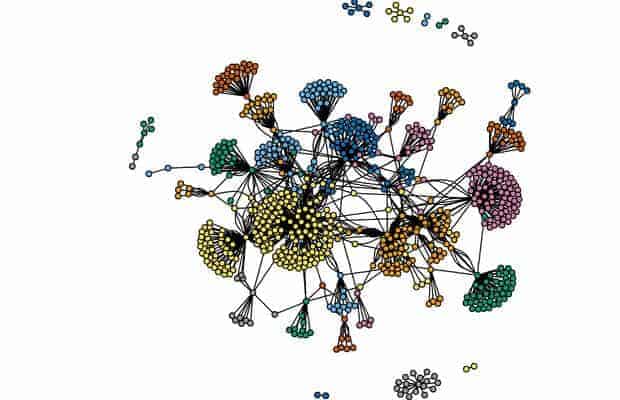When drug users go online for the first time to buy opioids, they aren’t looking for the widest selection or the best prices for their illicit purchases, a new study suggests.
Researchers found that first-time drug buyers who visited one marketplace on the “darknet” cared only about finding trustworthy sellers – those who would deliver what they promised and keep the buyers’ identities secret.
“When opioid users are making that first purchase, price doesn’t matter at all,” said Scott Duxbury, lead author of the study and doctoral student in sociology at The Ohio State University.
“If they come back to buy again, price matters a little, but trust remains their primary concern.”
The study also found that while most of this drug-dealing marketplace could be susceptible to crackdowns by law enforcement, the core group of repeat buyers and sellers would be much harder to shut down.
“This core group could be less vulnerable than their real-world counterparts to disruption by law enforcement,” Duxbury said.
Duxbury and Dana Haynie, professor of sociology at Ohio State, conducted the first study to investigate the network structure of an encrypted online drug distribution network, examining the web of connections between buyers and sellers.
“The accessibility and ease of purchasing illegal drugs online opens up a global market where buyers and sellers are no longer constrained by locality and buyers have more options and diversity in product selection,” Haynie said.
They presented their research Aug. 12 in Montreal at the annual meeting of the American Sociological Association and in a paper published recently in the Journal of Quantitative Criminology.
The researchers collected data on all transactions in a six-month period involving opioid dealers on one large drug distribution market, which they called “Cryptomarket.” This market exists on the darknet – a largely hidden part of the web that can be accessed only through Tor, software that allows anonymous transactions and communication.
All the information the researchers collected was available to anyone on Cryptomarket, including usernames for all buyers and sellers and evaluations that sellers and buyers give each other for every transaction. All sellers had reputation scores based on these evaluations, which the researchers used to measure trustworthiness.
The study included 57 sellers and 706 buyers. The researchers found that there were 36 unique communities formed around prolific vendors. The largest community had 146 members.
The overwhelming majority of buyers on Cryptomarket made only one purchase – just 18 percent bought drugs two or more times. But the most enthusiastic buyers made more than 20 purchases during the six-month study.
Duxbury said it is hard to say why most users bought only once. Some may have just been experimenting, or had a bad experience. Some may be making more purchases, but not within the six months covered in this study.
Once buyers found a seller they trusted, they didn’t shop around much, the study found. Only 30 percent of those who bought more than once sought out new vendors.
The fact that most Cryptomarket buyers purchased only from one seller means that the overall network is not very resilient and could be disrupted relatively easily by taking out a few of the most prolific vendors.
“If you eliminate several large sellers, all their buyers are stranded without a seller on the market that they have used before,” Duxbury said.
Another way the researchers measured the resiliency of the Cryptomarket network was by the number of components – a group of buyers and sellers who are connected to each other, but separated from all other groups. More components suggest a more fragmented, weaker network.
The researchers calculated what would happen if they eliminated various combinations of three sellers in the Cryptomarket. In that scenario, the number of components would increase by as much as sevenfold, a major blow to the network’s strength. And the number of buyers alone in the network with no seller they are connected to would increase up to tenfold.
But the core network of sellers and buyers who were involved in more than one transaction (174 of the 763 individuals) would be much more resilient, Duxbury said.
When the researchers eliminated three sellers from this core group, the number of components and the number of buyers with no connected seller both increased by just 30 percent.
“There is less impact on these more highly connected buyers when you take out sellers,” Duxbury said.
“You might have a buyer who has made five purchases from one seller, three from another seller and two from a third one. If you take out one of those sellers, they still have others to go to.”
While officials around the world have made headlines by shutting down darknet drug-selling sites like Silk Road and AlphaBay, Duxbury noted that new sites pop up nearly immediately to replace them.
This study’s results emphasizing the importance of trust may provide the best avenue for at least interrupting the cycle, Duxbury said. Law enforcement should go after the reputation of the sellers, which is easiest when new marketplaces are starting up, he said.
“If officials can find a way to flood a network with bad evaluations when it is first starting, that will make it difficult for buyers to make informed decisions. That could stop markets when they are just beginning,” he said.
But, for now, the results have some troubling implications for the future of illegal drug sales, said Haynie, who is also director of Ohio State’s Criminal Justice Research Center and a member of the university’s Translational Data Analytics Institute.
“With the opioid epidemic underway in the United States and health care professionals limiting the number of opioid-based medications being prescribed, a major concern raised by our study is that more opioid users will turn to the darknet to acquire drugs,” she said.
“We are currently collecting longitudinal data on the online drug market to determine whether this is the case.”


